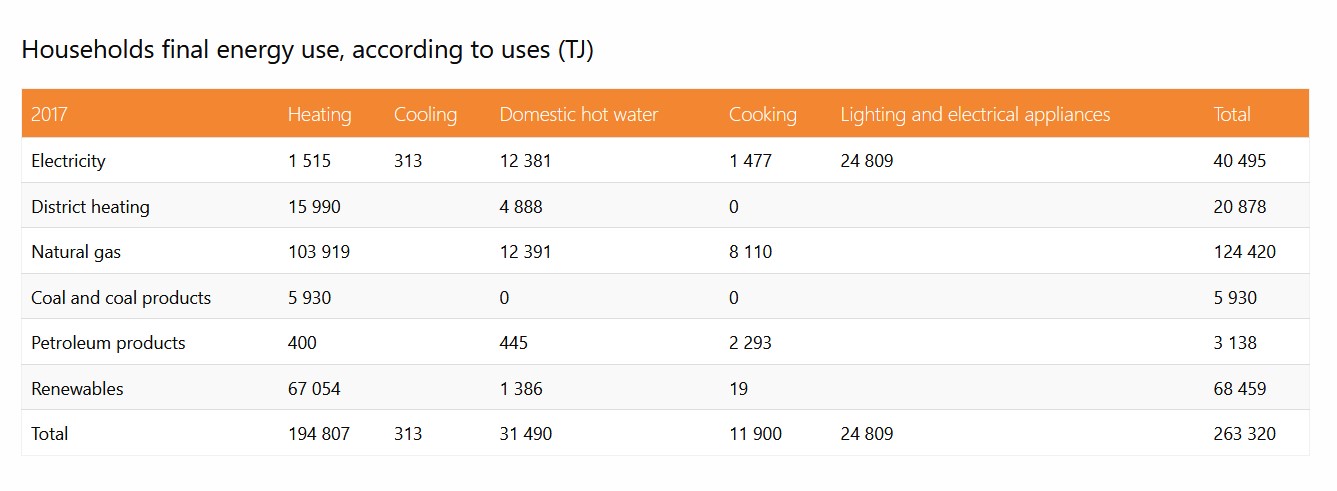
Before 2010, District Heating related natural gas was used up to 60% in cogeneration, with the remaining part in heat-only boilers. Nowadays the main heat production technologies are gas engine (11%), other CHP technologies (34%) and direct heat technology (47%) in district heat production.
Coal or oil-firing is currently used only in very few power plants. Some coal-fired plants have replaced coal with biomass. Several small and medium-size biomass heating plants have been put into operation and the development of more biomass as well as geothermal-based plants are in progress.
Natural gas remains the main fuel used in the energy sector in Hungary. It plays a very important role in electricity production, particularly in cogeneration, as well as in District Heating. Natural gas share in District Heating was already 70% in 2000 and increased to over 83% by 2010 (heat only and CHP heat). It decreased to 71% in 2017 due to the increasing use of renewable energy sources.
In Hungary the most significant national documents regarding energy strategy such as the National Energy Strategy 2030 and The Second National Climate Change Strategy have been developed in line with the EU’s 2030 climate and energy policy objectives and directions. The Energy Strategy is under review. The framework of the strategy is defined by the following target system: security of supply and economic sustainability.

Based on the Second National Climate Change Strategy approved by the Parliament in 2018, Hungary plans to decrease the emission by 52-85% until 2050 compared to the base year of 1990.
The government is working on making district heating based on inland green energy sources, mainly biomass, geothermal energy and communal waste and believes that the development of geothermal energy is promising in Hungary. Regarding the period 2014-2020, there are several projects founded by Environment and Energy Operational Program (EEOP) in phase of planning and implementation, aiming at building new biomass and geothermal district heating capacities.
If you would like to learn more, you can purchase the latest Country by Country Survey.
Useful links:
Association of Hungarian District Heating Enterprises (MaTaSzSz)